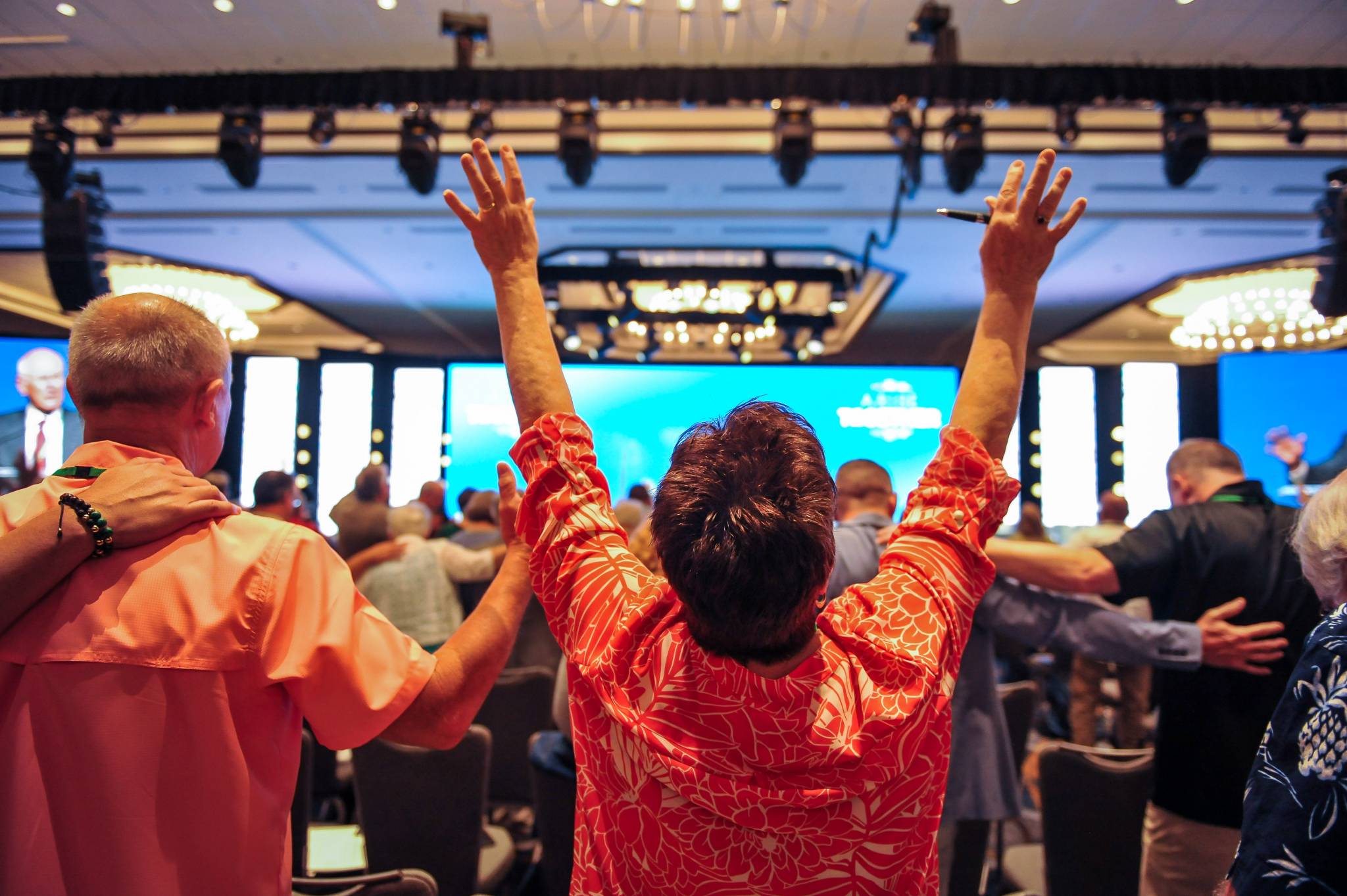On March 26, 2019, Nash Tabor woke up sure of his future. Nash, a high school senior, had been dating his girlfriend Britni for a year and was confident they would eventually get married. That morning, he saw his mom in the kitchen and said, “I think I’m going to become a park ranger.” His mom wasn’t surprised by his declaration; as an Eagle Scout and lover of all things outdoor, this future occupation seemed to fit. His girlfriend would also be on board with his choice, knowing him well. Britni, a year ahead of Nash in school, was already into her first year of college, studying to be a teacher.
Life was good. Life was planned.
Life can change.
On this particular morning in March, Nash’s mom had an unsettling feeling deep in her spirit and decided to stay home for the day. Nash had plans to head out to work with his two best friends on a project called “The Oklahoma KidWind Challenge.” The almost 18-year-old teens were planning for the upcoming windmill challenge finals, and of course, after a great deal of work, it was time for a well-earned break. Nash found himself climbing onto the back of his friend’s dirt bike, a bike he had never ridden. His friends figured he could handle the bike and told him they would coach him through. Nash knew if he wore a helmet he would be unable to hear the instructions they would be yelling from the sideline; he decided not to wear the helmet.
Nash let go of the brakes and gave the bike some gas. He took off. Looking up, he saw that he was going to run into his friend’s house. He tensed up, closed his eyes, and the throttle ran higher. Nash ran into the house, flew over the left side of the handlebars, and knocked himself out with a head-first hit.
As he lay unconscious, Nash saw what he describes as a “PowerPoint Presentation” roll through his mind. First, he saw the last conversation with his friends right before getting on the bike. Next, he saw a smaller dirt bike, one that he should have ridden but was out of gas. He doesn’t remember the third slide, but as he came to, he realized he had one friend at his head and another at his side.
Nash knew this was serious. He was an Eagle Scout, after all, as were his friends, so he knew by their placement at his head and his side that they were thinking he had a spinal cord injury. At that point, Nash slapped his legs with his hands. “I can’t feel my legs! I can’t feel my legs!” He was panicking. He started asking, “How did this happen?” But thanks to the slide show that played while he was unconscious, he knew how it happened. He was really asking, “How did I let this happen?”
The next few minutes and hours were full. Nash was “out in the boonies of Tuttle, Oklahoma,” and although a friend had already called 9-1-1 for help, the ambulance was having trouble finding the house. His friend’s mom returned home about that time, assessed the situation, and headed right back out to help guide the ambulance to the house.
One of Nash’s friends began to pray. Nash prayed next and felt as if the Lord was praying through him, “God, use my story for your glory. If one person is saved, this is worth it. It’s my cross to bear. I trust you completely.” Following his prayer, he felt as if the Lord had placed His hand on Nash’s shoulder, and he was calm, even describing himself as happy. “The peace that washed over me was unlike anything this world can provide.” Nash was able to begin calming his friends, reassuring them more than they could reassure him.
Finally, the ambulance arrived and got Nash loaded up. Minutes are crucial when dealing with a suspected spinal cord injury. Due to the remote location of the accident in “the boonies,” there was only a small window of time for the medflight to land at a local fire department for transfer. If the med flight did not arrive in time to meet the ambulance, they would be forced to drive on. Luckily, the med flight helicopter landed just on time, and Nash and his father, who had just arrived, were flown to the OU Medical Center.
At this point, no one had gotten ahold of Britni. There was some confusion between the medical workers, as they misheard and were searching for a “Whitney.” After Nash’s parents were notified, Nash’s mom was working to get ahold of Britni’s parents, planning to have them call Britni; she didn’t want her to be alarmed or notified while she was alone and away at school. It would be a few hours before she would hear the news and make it to the OU Medical Center. When Britni arrived, she found the waiting room packed with 150 youth from the church and their parents and family.
Upon arrival at the medical center, Nash learned that he had a concussion, five broken vertebrae, ten broken ribs, a dislocated sternum, and a complete spinal cord injury at the T-2 level, meaning he would never walk again.
While Nash was optimistic, he was also sure his future would look much different than he and Britni had planned. For this reason, while still in the ICU (Intensive Care Unit), he encouraged Britni to leave, to move on, and to live the life she had dreamed of—with someone else. Britni stayed. She said of that time: “We were already dating with an eternal perspective, and God got us to a point where we could handle it emotionally.”
The first of many surgeries took place just two days later. Nash went in for spinal surgery, attaching rods directly to his spine. Seven days after the accident, Nash turned 18 in the ICU surrounded by his friends: “Just as I would have spent the day otherwise.”
Within two weeks of the accident, Nash was sent to the Neurorehabilitation Center of the Craig Hospital in Colorado. It was here that he would begin to feel debilitating nausea that the doctors could not pinpoint. After he developed a fever of 105 degrees, medical staff discovered that he had contracted a staph infection. As a result, he would need another surgery to replace the rods that were inserted just over a month ago. These rods, intended to strengthen his spine, had formed a staph biofilm, necessitating their replacement. Once the surgery was complete, Nash felt much better and was able to continue with his rehab.
On July 3rd, Nash returned home and spent the 4th of July with his family and friends. On July 21st, Nash would share his testimony for the first time, less than four months after the accident. That day, he would feel a twinge of pain in his neck and shoulders and assume he had slept wrong. The pain would grow in intensity quickly, and eventually, that pain would last all day. Nash would receive a CT scan that would show upsetting news: he had a cyst inside his spinal cord tethering to his scar tissue from his previous surgeries. This cyst was threatening to take away what little ability he had left. He was already beginning to feel numbness in his pinkie fingers, finding that they were also moving more slowly. Nash was headed back to the Craig Rehab Center in Colorado, where one of the only two doctors who could attempt to fix this issue worked.
Just as God had provided and protected in so many other instances throughout this time, He would show up again. Nash was told that it would take six months to get the surgery approved through insurance, and during that time of waiting, any mobility he lost in his arms and hands would never be regained. Again, God placed His hand on Nash’s shoulder and whispered, “I’ve got this.” Miraculously, the insurance went through in three days.
In the first week of November, Nash was back in Colorado for his surgery; it was successful. After he was released into his mother’s care and headed to the apartment she had rented for her stay, he began to feel unbearable pain in his right shoulder. Nash was rushed back to the hospital and returned to the room he had vacated only 12 hours earlier. It turns out that he had suffered from a pulmonary embolism (a blood clot); he was told he had “the thickest blood they had ever seen” and was placed on blood thinners. Nash explains, “This was just another time that I should or could have died.” Thankfully, Nash returned home in time for Thanksgiving, which he celebrated with friends and family.
Nash was soon able to move forward with his new future. He completed high school and enrolled at the University of Central Oklahoma, where Britni was already a student. He completed his degree in Kinesiology: Outdoor and Community Recreation. He and Britni are now married and living in Yukon, Oklahoma, where Nash works with the Parks and Recreation Department.
While he isn’t the park ranger he had planned to be, he still works outside and in the community; he organizes pickleball, volleyball, chess, E-sports, and walking events and leagues, to name a few. He also teaches a physical education class to homeschool students and supervises the local gym. Nash said that he “wears many hats” at his job and truly enjoys it.
Nash has not allowed his new life in a wheelchair to keep him from experiencing all the things he wants to. Nash is still good friends with the young men who were at the accident with him, and they have sought out many new adventures together, “taking my chair into places it probably shouldn’t go.” Nash has tried out indoor sky diving, repelling, hiking, and many other outdoor sports.
Britni has had a front-row seat to the miracle that is Nash Tabor, and she says, “Watching him have this zest for God and life – what he’s doing, how he’s living – I want that for myself.” She explained that Nash is always looking for the silver linings and doesn’t get hung up on minor things. She shared: “Sometimes, I just stop and think, ‘Woah! We’re incredibly blessed.’”
While the road has been anything but easy, Nash has never wavered in his testament to the goodness of God. Two of the most powerful parts of his story center on him feeling God’s hand on his shoulder and hearing, “I’ve got this.” “God’s got this” has become Nash’s mantra, something he held onto during rehab and surgeries, and something he uses to help encourage others. Nash walks in optimism, sharing, “It should have been so much worse—30 miles per hour with no helmet. I could have been a quadriplegic. I could have had a brain injury.” God protected Nash. “I’ve got my head and my hands. I’ll be okay.” Nash continues to hold onto 2 Corinthians 4:17-18, which says: “For our light and momentary troubles are achieving for us an eternal glory that far outweighs them all. So we fix our eyes not on what is seen, but on what is unseen, since what is seen is temporary, but what is unseen is eternal.”
Nash has taken responsibility for the accident that changed his life. He shared: “I paralyzed myself. I made a choice, and that choice had consequences.” But his optimism and trust in the Lord are ever-present: “I’ll walk here or in heaven; just use me.”








